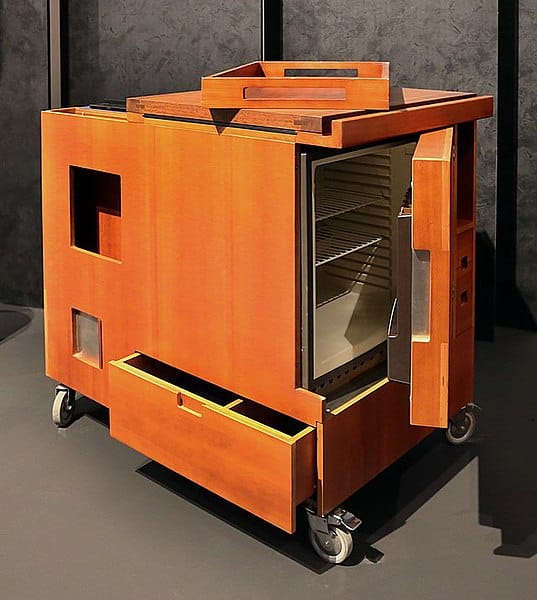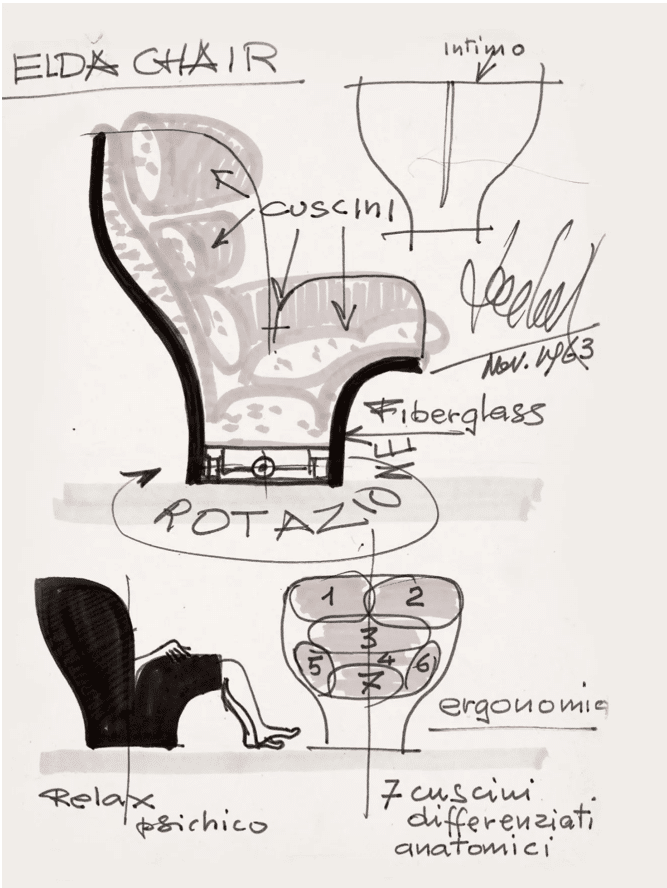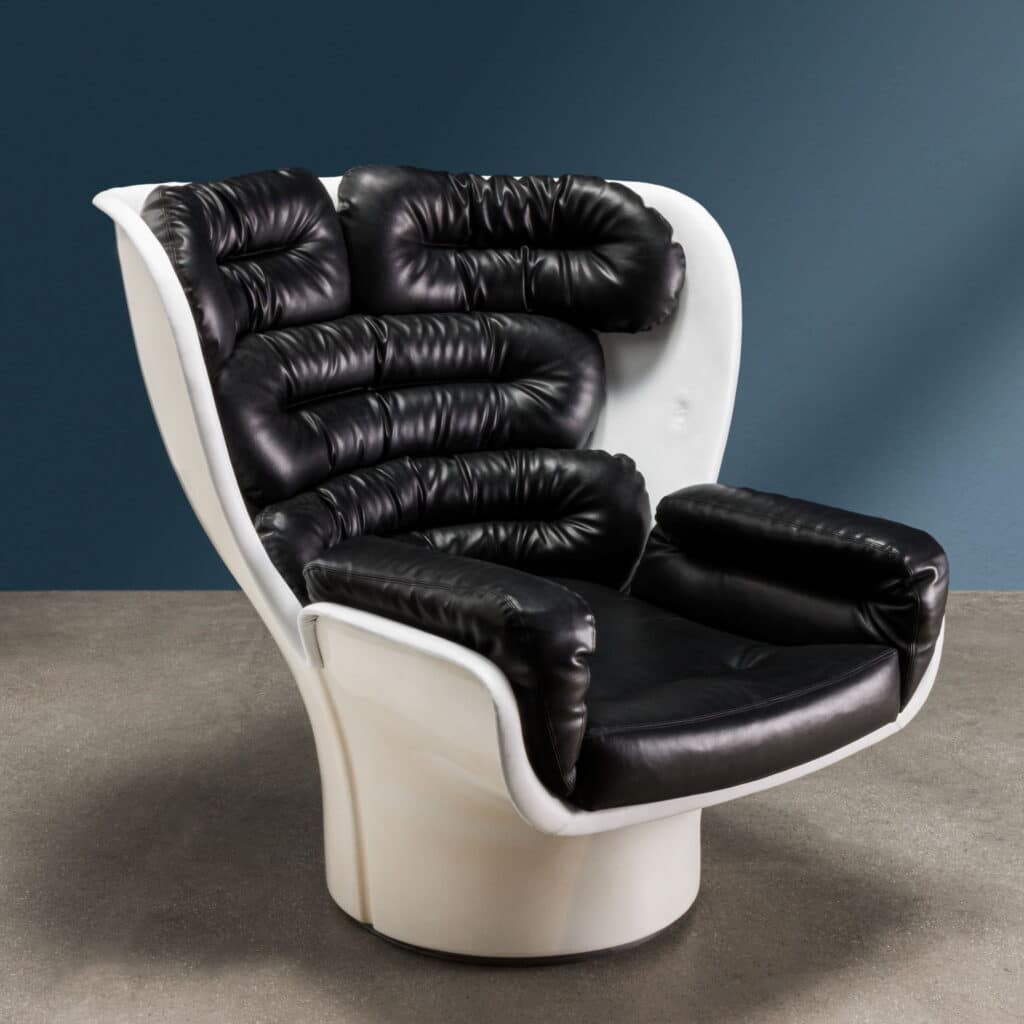Joe Colombo, the future in the sixties
Who passed away prematurely at just 41 years old, Joe Colombo (born Cesare) is among the most lamented Italian designers.
Born in 1930 in Milan, he graduated from the Brera Academy of Fine Arts, subsequently enrolling in the architecture faculty of the Milan Polytechnic, without ever completing his studies. Son of a small Milanese industrialist, his creative streak was certainly in his DNA, so much so that his brother Gianni was also active as an artist in the artistic panorama of those years. Starting from the 1950s he began his activity as a planner and designer, with a brief interlude at the end of the 1950s when, following the death of his father, he decided together with his brother to take over the business dedicated to the production of electrical conductors.
But the lure of architectural and furniture design was such that in 1961 they decided to sell the family business and Joe was able to return to his true passion.
In 1964 he finally managed to open his own design studio in the city of Milan.
“We will have phones in our pockets”, this phrase, confided to Gae Aulenti, summarizes the founding thought of Joe Colombo’s design philosophy. The clear foresight underlying his project idea shows a designer capable not only of foreseeing the future, but also of bringing it into being in his works.
Strongly indebted to the new materials, Colombo was able to propose not only architecture, but also furnishings that anticipated formal and material choices that would take root in industrial production years, if not decades later. Emblematic examples are the living concepts of the 1960s, such as the Minikitchen, a single compact block that becomes a kitchen in all respects, capable of adapting to different spaces and contexts, even being able to be moved thanks to wheels.

Certainly also thanks to the family business, Joe came into contact with the new materials resulting from industrialization and which his skill was able to translate into the creation of architecture and, even more so, furniture.
An emblematic case is that of the Elda Chair, an armchair designed in 1963 and produced only two years later by Concept (currently by Longhi). The name is a tribute to his wife, Elda Baiocchi, whom he married in 1959. Colombo decided to replace the traditional wooden shell, traditionally used for armchairs, with a fiberglass structure, a material usually used for the construction of boats; the internal part features seven tubular cushions covered in leather.
In this furniture, the designer was able to combine functionality with aesthetics.
In fact, Colombo paid particular attention to the usability of the armchair: the enveloping backrest, the ergonomic cushions, the possibility of 360° rotation allow maximum mobility and great comfort in use.
Quoting Colombo himself, “psychic relaxation” is guaranteed.
Looking at the Elda you immediately notice the attention that Colombo also placed in the formal design, with a look at futuristic, almost aerospace-like lines. We are right in the years of the very first space journeys, accompanied by science fiction films and TV series. These are the times of the Space Age, fashion inspired by these new discoveries. So Elda is used in film sets: it is found in episodes of Star Trek, Space: 1999 and in the most recent Hunger Games, set in a dystopian future.
Joe Colombo’s catalog is vast and demonstrates the designer’s great ability to anticipate the times with ingenious intuitions, modular products capable of combining in different solutions, to adapt to the needs of new spaces and the new society.
But the lucidity of Columbus’ projects demonstrates how he tried not only to respond to the needs of his contemporaneity, but to anticipate the times, managing to foresee what needs and goals his posterity would achieve.






